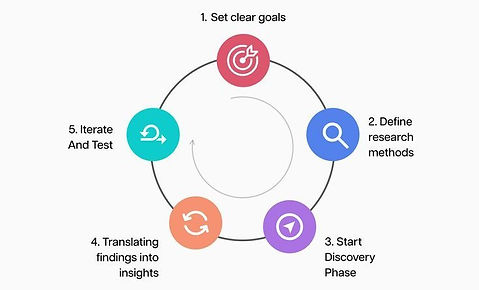
Kaiser / Risant
Mohan Vamsee Gunthati
UX Strategist
Cognizant Technologies

The Problem
Inconsistent User Experience Across Partner Brands
As Risant Org partners with multiple hospitals nationwide, each with its unique branding, creating a consistent user experience became challenging. Patients and healthcare professionals encountered varied interfaces, making it difficult to navigate and detracting from overall usability.
Demand for Virtual Care Accessibility and Simplified Booking
With the rise in telehealth, patients sought seamless, on-demand access to virtual care. Current systems lacked a quick and user-friendly solution for booking appointments and interacting with doctors remotely, leaving a gap in patient accessibility to care.
Lack of ADA-Compliant UX for Medical Documentation and Triage Support
Applications like Value Based Care Guide and Right Place Right Time needed updates to meet ADA standards. These tools had accessibility issues in critical areas, impacting their usability for all types of users, especially those with disabilities, and required an overhaul to align with both Kaiser’s standards and ADA guidelines.
Research
I joined the Risant Organization and researched that this approach is B2B2C Model and risant is , partnering with hospitals across the USA.
Risant’s goal is to enhance the user experience in healthcare through seamless, accessible features like on-demand virtual care and one-click appointment booking.
This UX case study outlines the responsibilities and strategies for creating a default design system, ensuring UX consistency and accessibility, and collaborating across multiple product streams within Risant.


Competitive Analysis
-
Extensively analyzed the market competition
-
Define what we are capable of executing as a team with the given resources
-
Establish a competitive advantage in the product
-
Define product core and secondary product features
Leadership Intake
-
Leadership needed an integrated approach to track activity and empower local and remote usage of similar templates across the organization.
-
It would include template versioning, report tracking and data analytics.
Customer Journey
As a product and engineering shared team, we defined the core customer journey.
What are they thinking in each step?
What features map to the function?
Create consistent pages, identifying key templates to adapt reusability of similar templates using CMS tool like Builder.io
What are the critical functions (use case) the customer will experience?
What are they feeling as they perform the function?
What is the goal of the user performing the function?

Design System for Risant
Objective
The default design system is planned to be adaptable across various partner hospital brands, ensuring consistency, accessibility, and alignment with Kaiser standards. As the lead designer, the goal was to establish a set of components and guidelines that allow brand customization while maintaining a cohesive experience across all user touchpoints.
Key Design System Goals
-
Ensure design consistency and accessibility across components, meeting ADA compliance.
-
Allow flexibility to incorporate individual brand customizations while maintaining usability.
-
Align with Kaiser’s design standards to foster a cohesive user experience.
-
Develop components with a responsive, user-friendly approach for various devices and platforms.
Approach and Process
The process involved identifying core components, conducting accessibility audits, and developing UI guidelines. Collaboration with the development team ensured seamless integration of components, resulting in a modular design system that could be easily adapted for partner brands. Initially UX team involved in discovering the leadership advised 3rd party design systems to incorporate. But upon various research, it was concluded to white label kaiser design system as a base and eventually enhance and build on top of of what kaiser’s internal design system.
Support for Multiple Streams within Risant Organization
Value Based Care Guide (VBCG)
Value-Based Care Guide (VBCG) is a documentation tool focusing on accurate medical recordkeeping. My role involved analyzing user workflows and designing interfaces supporting medical professionals in efficiently documenting care. Key considerations included clarity, ease of navigation, and intuitive data entry aligned with standard medical practices. Developed a few templates that would serve as a consistent look and feel across multiple areas
Right Place Right Time
(RPRT)
Right Place Right Time (RPRT) is an intelligent triage tool that supports both patient and provider needs through ADA a 3rd party Medical assessment tool which widely accepted medical industry and is compliant AI. This system enables patients to access virtual care quickly, helping them find the right care at the right time. UX responsibilities included conducting user research to understand patient interactions and designing a streamlined experience for on-demand video consultations. This involved ensuring seamless integration of AI-driven insights into user interfaces for more personalized patient support.
UX Testing and
Guidelines Development
As a UX strategist, I took an active role in testing components across different user journeys to ensure consistency and reliability. The approach included iterative testing with stakeholders and end-users, validating accessibility, and refining components based on feedback. Guidelines were documented to support future developments and ensure adherence to both Kaiser’s standards and ADA compliance. These guidelines serve as a resource for developers, designers, and stakeholders involved in customizing the design system for different brands.
Hi-Fidelity Prototypes
Hi-Fidelity prototypes were created to establish limited number of templates, so the engineering would repurpose for similar needs and for leadership to track.
Spec
-
Application specifications were shared with engineering team by giving DEV access in figma.
-
Each function was documented for review
-
The UX team met with engineering for product review and Q&A on a regular UX / UI Office hours.

Results
-
Leadership feedback was exceptional.
-
Collaborating closely with all the stream product owners on a day-to-day basis to deliver the designs 1 to 2 sprints ahead in time making more evident about UX team's commitment towards the goals.
-
This is an early kickoff and more hospitals are partnering with Risant eventually.
-
Planned well on scalability for Branding and Theming